In the crazy financial world we live in, people are starved for a decent ROI on their invested capital which has a lot of people looking into selling put options for a living.
And it makes sense, really.
After all, interest rates have never been lower and if anything it seems they could even drop further (negative interest rates anybody?).
This leaves us in unprecedented times and forced to navigate an increasingly tricky investing and trading landscape as things have become increasingly complex over the years.
Years ago when trading in the stock market, you largely only had other traders you had to worry about.
You had the large institutional traders, individual traders, hedge funds and for the most part the government stayed out of the whole thing.
Generally speaking the only government intervention in the markets was the result of some legal crackdown where they enforced regulations (in the case of insider trading or uncovering scams like Bernie Madoff’s pyramid scheme) or whether or not they moved interest rates at all.
I’d say this period of time was around when Alan Greenspan was chairman of the Federal Reserve.

But since 2008 everything has changed.
Now governments have taken an active role in the financial markets from buying assets to prop up the market to printing money to offer liquidity and so on.
Oh, and they still fiddle with interest rates but it seems only to keep them at the current level or drop them.
Because of all of this, the stock market has continued to climb in value (where assets, in my opinion, are reflecting more the inflated financial environment as opposed to indicating the true value of the company) and volatility is suppressed.
 Then, all of a sudden, something happens and volatility returns to the market with a vengeance and the market drops huge (like the 20-30%+ drops we’ve seen off and on over the past couple years) before everyone piles back in, buys the dip and the market jumps back up to it’s previous highs and beyond.
Then, all of a sudden, something happens and volatility returns to the market with a vengeance and the market drops huge (like the 20-30%+ drops we’ve seen off and on over the past couple years) before everyone piles back in, buys the dip and the market jumps back up to it’s previous highs and beyond.
You may be asking yourself, “And why does this matter? Why the history lesson when all I want to know is how to sell put options for a living?”
It matters because with everything changing in the markets – and interest rates being so low – it means people can no longer just throw their money in a savings account in the bank and earn a decent return.
And for the most part, they can’t do it in any other secure or non-risky financial asset.
Because of this, it causes investors to seek out returns wherever they can find them and this causes increased competition and a rush towards riskier trades and investment ideas as they scramble to earn a return on their money that beats inflation.

And this could very well be where you’re at right now by searching how you can go about selling put options for a living.
In fact, I believe it’s a big reason why trading options has become so popular over the past few years – with all sorts of new people jumping into trading them. (Of course, if you follow my blog at all you know that I recommend that everyone get up to speed on the ins and outs of trading options before placing any trades. And a big part of figuring that out is to read this book here.)
So with the history lesson, my goal is to give you a bit of insight as to the current financial landscape and to let you know that even with strategies like selling put options for income it comes with a heightened bit of risk because of the situation we find ourselves in.
Selling Put Options for a Living – Here We Go
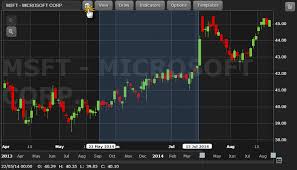 When it comes to outlining this options trading strategy, I’ve gone through it in detail in the post I’ve written called, “Selling Put Options for Income – The Fast Start Guide”
When it comes to outlining this options trading strategy, I’ve gone through it in detail in the post I’ve written called, “Selling Put Options for Income – The Fast Start Guide”
So for the specific “how to’s” of the strategy, you should read that article.
That said, I’ll give you a brief overview of how it works here.
Basically when you’re selling puts you choose a price that you think a stock won’t drop below.
Then you choose the closest strike price to that level and then sell however many put contracts you want.
Once you do this, you’ll be credited a certain amount of money for placing the trade (this is called the “option premium”).
This is basically the income you’re trying to generate.
The amount of money that you get for placing this trade depends on a lot of things: time left in the contract before it expires, the volatility of the stock, the volatility of the stock market, how close the strike price is to the current price the stock is trading at and so on.
It is a bit of a balancing act and takes some experience and practice to figure all these things out to where you’re making a decent amount of income for the risk you’re taking. (Which is why I recommend you get started by following the trade alerts here.)
If – at the option expiration date – the stock is trading above the strike price you chose, everything is great and the option expires out of the money (which is what you want when you’re selling options) and life is good.
In this case, you walk away with your premium.

On the other hand, if the stock drops below the strike price you sold the puts at, you then have to buy an equal number of shares of stock to the put contracts you sold.
So if you sold 2 put contracts, you would have to buy 200 shares of stock (as each option contract controls 100 shares).
You’d still get to keep the premium, but you’d just have to come up with the money to cover the share purchase.
And this might not be a bad thing if you like the stock and were happy to buy it at a lower price than the market level when you place the trade.
If you don’t like the stock and end up having to buy all those shares, it can really mess up your trading or money management program – tying up a large amount of your capital.
But this strategy has a number of positives:
- you can receive premium and end up buying stocks you like at a discount
- you can trade weekly or monthly put contracts so that you generate weekly or monthly income (just like an extra paycheck)
- as a seller of options (rather than a buyer), historically the odds are in your favor as most option contracts expire worthless
The negatives are:
- your account needs to be approved by your online broker before you can place your trades
- you need to have enough capital in your account in order to cover the buying of the shares in case the trade moves against you
- you may tie up a lot of your trading capital or get stuck with a stock you don’t want

All in all, if you can live with the negatives this can be a great way to generate monthly income. So you can see that it’s possible to start selling put options for a living.


Other related questions people have asked on the subject of “Selling put options for a living.”
Can you make a living off selling options?
You can make a living trading options, but it is not easy. You can sell options for other traders, but this requires you to take the opposite side of the trade. If you are long options, then someone has to be short them. The best way to make money with stock options is through arbitrage strategies though they are very difficult and risky. Finally, if you take accurate trades that have an edge over the market then yes – buying low and selling high will be profitable over time even when there are occasional losers in between.
How much money can you make selling puts?
You can earn anywhere from 1-5% each week by selling options.
Put selling is a type of option trading and you can make as much or as little money as anyone. The more expensive the options, the higher amount of money you can make.
If this feels like an easy method to make quick cash with no work involved, then we would urge otherwise. Keep in mind that by accepting such high risk (i.e., gambling) on something risky, your odds for success are slim and keep getting worse with time-the longer you leave it there.
Is selling put options Safe?
No. Selling put options is not 100% safe. If you sell put options, the seller (you) is fully exposed to potential loss of funds. To make your put option selling experience less risky, one should consider selling puts against shares of the same company which the buyer owns, or selling puts with a limited investment amount limit.
That said, if you sell puts against stocks you own, you can make money pretty consistently.
Can put options make you rich?
Yes. The potential to make money on put options is high. However, there are also significant risks associated with this strategy that must be considered.
The reason the potential is so high is because even if you don’t have a long position in the underlying security, earnings of the company increase greatly if they are able to get rid of their expiring put options through buying them back or executing buy-to-close transactions before expiration date. Especially for buyers who bought the puts cheaply when the price was lower at some earlier time, they can get more benefits by being “forced” to buy shares under unfavorable conditions.
Is it better to buy calls or sell puts?
It’s better to buy calls.
The potential payoff is theoretically unlimited, and if it doesn’t work out, you will never lose more than the cost of the purchase. Unlike with buying puts, there is no limit on downside risk when purchasing calls. If you sell puts and things go badly for you, you’ll either be called out of your position or forced to buy back in at an unfavorable price (both because the stock goes up or down towards zero). So in this sense buying puts can be much riskier than buying calls.
Why sell puts in the money?
In short, you sell a put in the money when you think that it is likely that the underlying security will stay below an option’s strike price for a while from now. Selling a put in the money represents one possible hedge to strangle profits. One would typically use this strategy when they have exposure to a stock and need protection against any sharp downturns in its price due to uncertainty about where it could head.
The puts seller has not risked much beyond having assigned an exercise notice (to buy or be bought) at any time before expiration day, but has collected some premium for this possibility of assignment.
How do you profit from puts?
A put option is a contract giving the owner the right to sell an underlying asset, such as 100 shares of GE stock, at a specified price by a particular date.
When you buy a put, it guarantees that if GE falls below 50.00 on any date before expiration, you’ll be able to sell your shares of GE stock for more than what you paid for them–that’s the business with puts. This would generate income for those buying put options because they’d still be getting revenue even though their underlying investment has dropped in value.
When should I sell my puts?
Sell a put if you believe the underlying asset will trade below the strike price of your put option before the expiration date.
This is typically based on some form of technical analysis, which can be as simple as reading a chart. If you’re not comfortable with analyzing charts, then just consult your broker for help deciding what to do depending on where specific stocks are trading at any given time. You can also consider looking at whether there’s been a ‘trigger event’ that might make sense to take action right away — for example, new regulations re outdated coal plants were imposed yesterday by a state agency in California and some sort of market selloff could happen because this increases companies’ cost to operate or people start demanding higher returns from it.
Which option strategy is most profitable?
Short strangles. A short strangle is an options strategy that generally trades for less than the cost of buying insurance on 100 shares, but offers unlimited profit potential on the upside. It’s a bet on both direction. You pay for it by giving up some or all of your profit to whatever you would have made if you had just bought one call or put spread instead.
The reason why it’s more profitable is because there are two risks within the option strategy – movement in price down which offsets losses incurred when prices go up, while simultaneously granting you infinite profit potential at least until expiration where costs are determined.
Are options gambling?
No, option trading is strategic investing.
The trader is trying to price in an outcome they believe will happen in the future – not just “hope” that happens, but actually $10+ million dollar bets. The potential scenarios usually play out with probabilities that are based on realistic paths for the company’s performance and what the market is likely to do when certain events occur (for example, if Apple reports strong earnings this quarter).
This approach requires an understanding of how markets work and what traders are likely to do when certain things happen. It starts with recognizing risk causes inevitable losses over time—in other words, no one can make money without risking losing some or all their bet too.
What is the risk of selling a call option?
Buying a call option is very risk-averse. Selling a call would only be profitable if you are “sure” that the underlying will stay above the strike price at expiration.
If the option expires in-the-money, you must buy shares of stock to deliver to your counterparty – but because they are already worth more than their pre-agreed price thanks to any gains above the strike, you lose money on each share purchased. You could offset this cost by selling an equivalent number of put options with different strike prices. The risks are substantially different from those for buying stocks where any loss is limited to the premium paid upfront.
If you’d like to do a little more research into finding the an options trading newsletter & the best options trading alert service please click here to read the article we’ve written as we’ve narrowed it down from quite a list of services that are currently on the market!

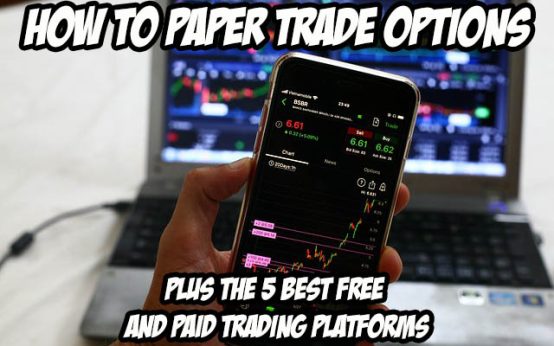 How to Paper Trade Options – Plus The 5 Best Free and Paid Trading Platforms
How to Paper Trade Options – Plus The 5 Best Free and Paid Trading Platforms  The Options Trading Mentor: Here’s How to Find the Best One for You
The Options Trading Mentor: Here’s How to Find the Best One for You 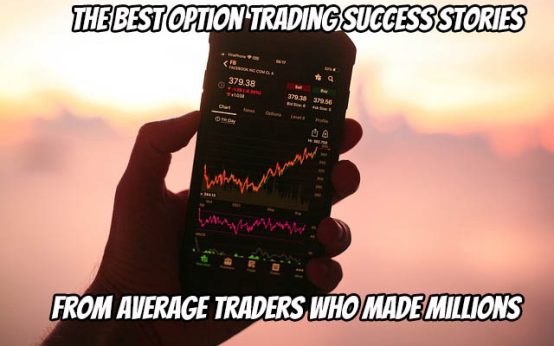 The Best Option Trading Success Stories from Average Traders Who Made Millions
The Best Option Trading Success Stories from Average Traders Who Made Millions 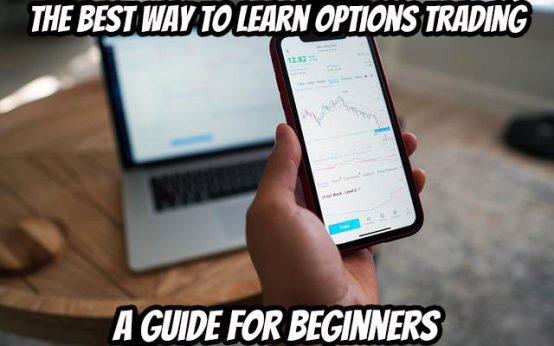 The Best Way to Learn Options Trading: A Guide for Beginners
The Best Way to Learn Options Trading: A Guide for Beginners  Here’s The Top WallStreetBets Sentiment Tool on The Market
Here’s The Top WallStreetBets Sentiment Tool on The Market 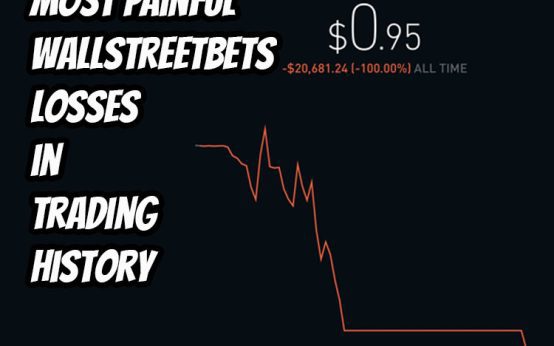 The Biggest and Most Painful WallStreetBets Losses in Trading History
The Biggest and Most Painful WallStreetBets Losses in Trading History